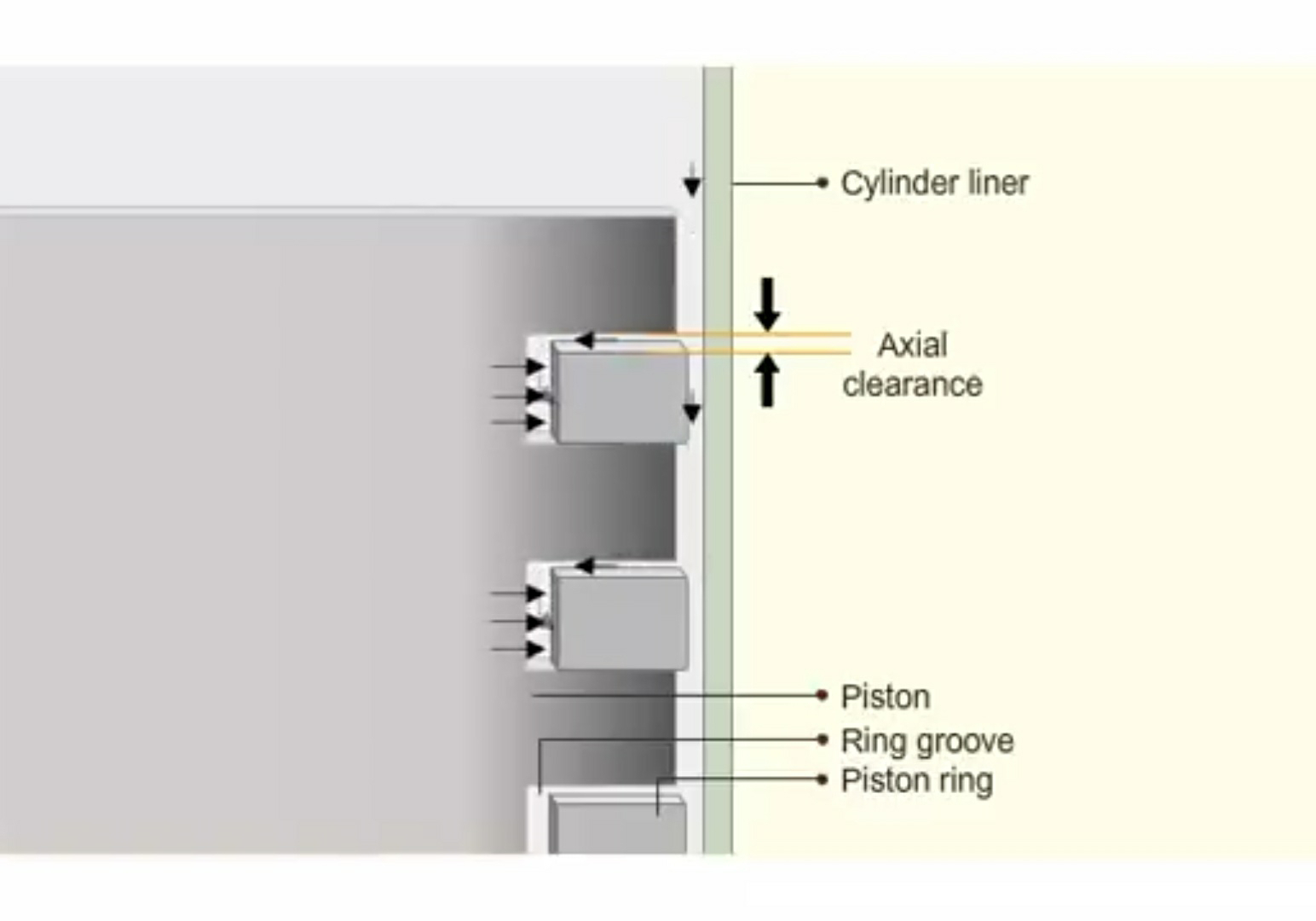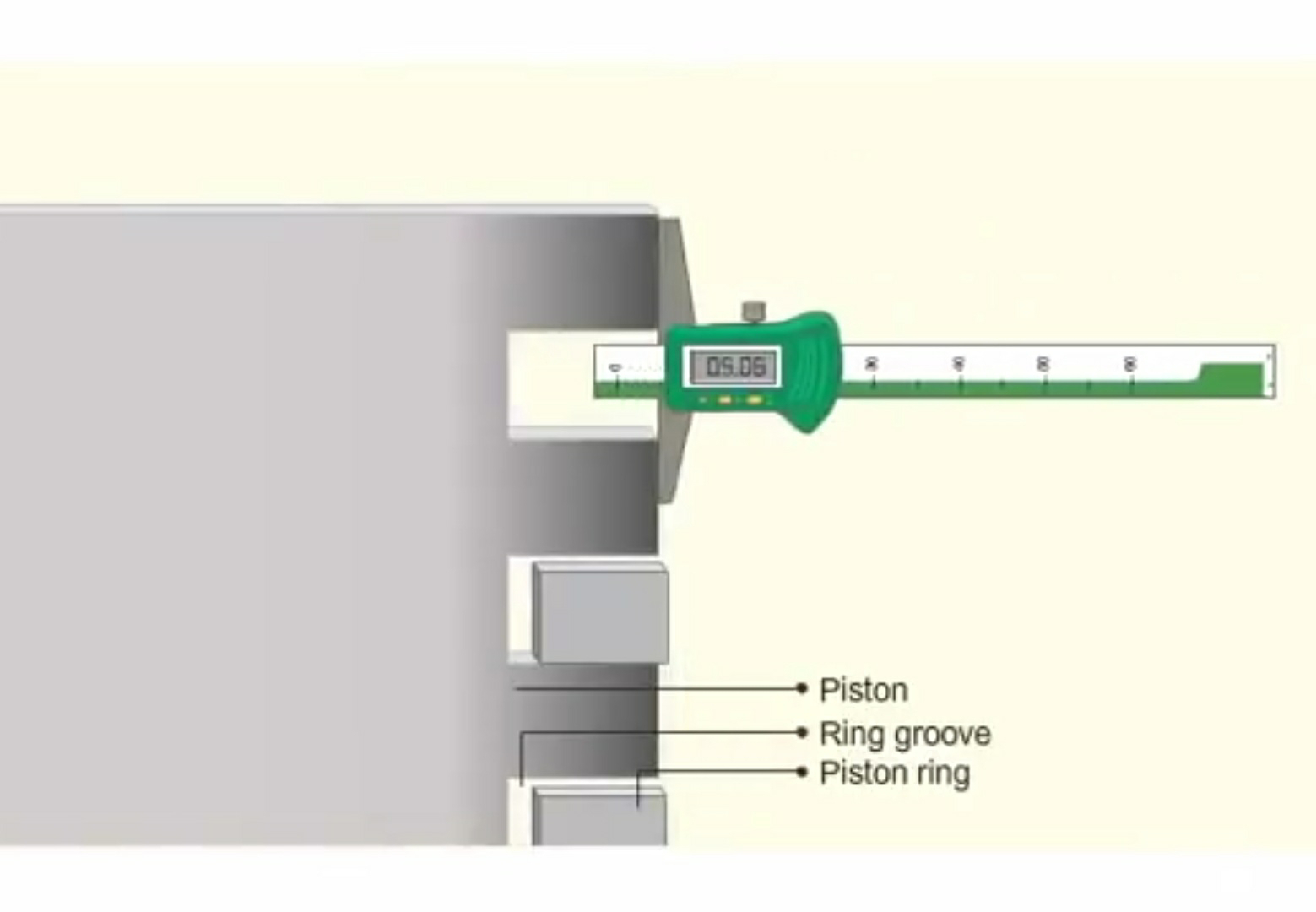know the types of Piston ring clearance
We have three types of clearance for piston rings.
- Butt clearance.
- Axial clearance.
- Back clearance or radial clearance.
- Is also known as ring end clearance or gap clearance.
- It is the distance between connecting faces of piston ring. ( or clearance between the end butt of the ring inside the liner.)
- This clearance should be within the limits specified by the engine manufacturer.
- The ring expands when the engine is hot. If the clearance is less than the minimum limit, ends touch due to this thermal expansion.
- The ring expands against the liner. This increases the friction resulting in breakage of ring and Seizure of piston.
- If the clearance is greater than the maximum limit, combustion gases blow by the rings and exhaust gases enter the crankcase.
- This results in loss of compression pressure in the cylinder.
- To measure butt clearance, insert the rings in the bottom of the liner and ensure that they are in line with the liner axis.
- Measure the clearance between the faces of the piston ring using a feeler gauge.
- Record two sets of readings, forward aft and port starboard.
2. Axial clearance
- Is a clearance from the top of the ring to the top of ring groove.
- The combustion gases exert pressure behind the piston rings and push towards the liner for proper sealing.
- If the clearance is less than the minimum limit, combustion gases cannot flow behind the rings.
- To measure axial clearance, fit the ring in the respective groove such that it rests on lower surface of the groove.
- Measure the clearance between piston ring and upper surface of the groove using a feeler gauge.
- Record two sets of reading, forward aft and port starboard.
3. Back clearance
- Is the clearance from inner diameter of the piston ring to inside diameter of the groove.
- Thickness of the ring should be less than groove depth so that the outer ring face is inside the ring groove.
- If there is no back clearance, the rings take the side thrust. This results in high friction and possible piston seizure.
- To measure back clearance, measure the depth of the piston ring groove by means of the depth gauge.
- Take both these measurements in at least 6 different positions around the groove circumference.
- The difference between the two readings will give the back clearance.
*Back clearance = Ring groove depth - Ring thickness.











No comments